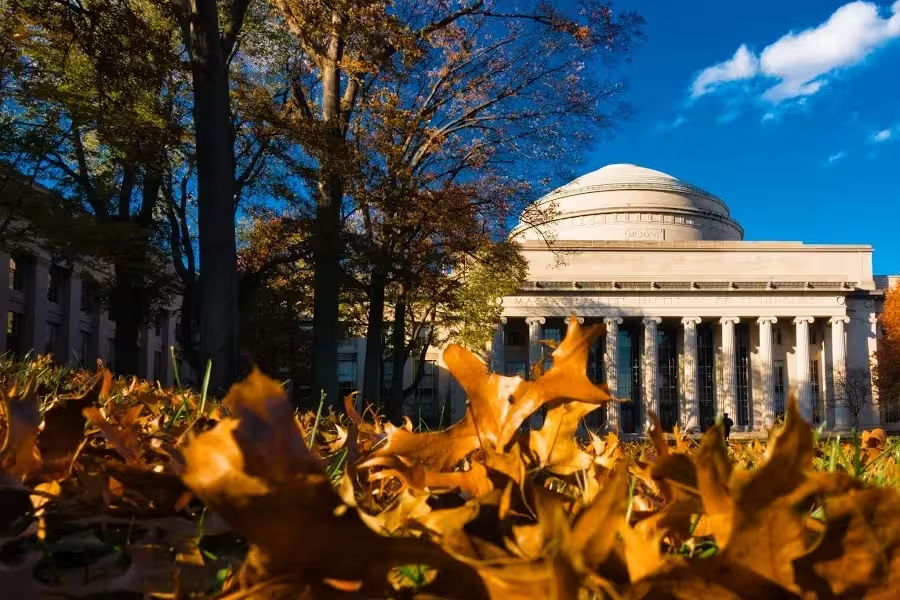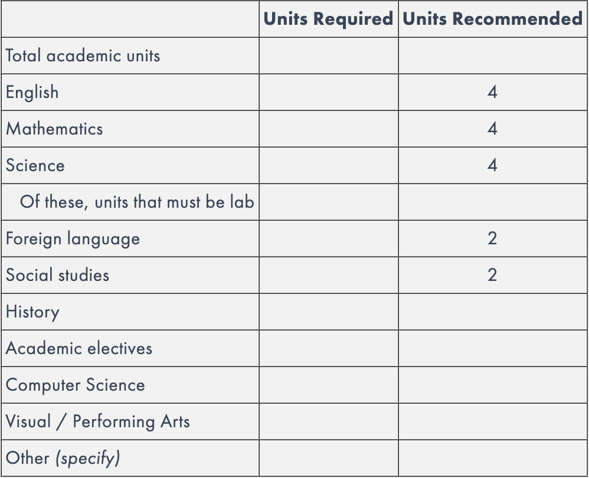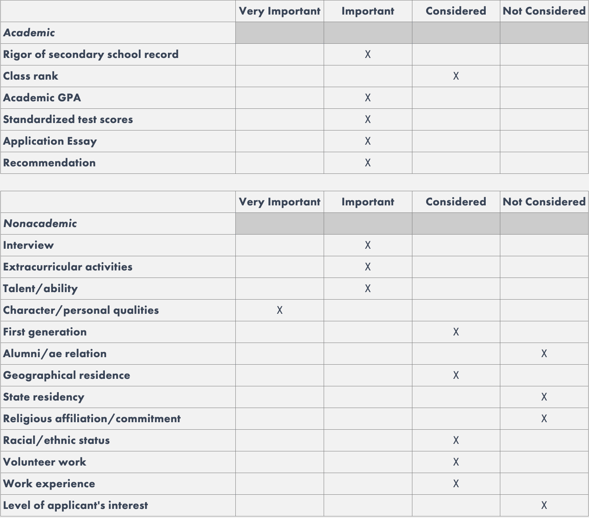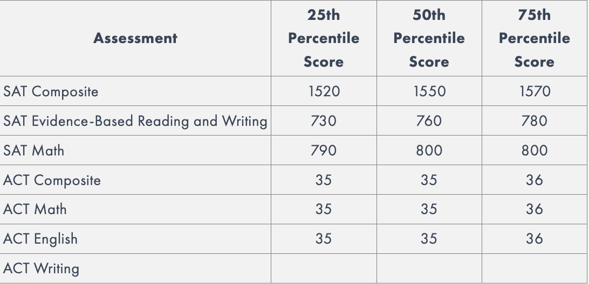MIT Admissions Profile

Introduction
The Massachusetts Institute of Technology (MIT), a world-renowned institution located in Cambridge, Massachusetts, is synonymous with innovation, cutting-edge research, and academic excellence. Students from all corners of the globe aspire to be part of MIT's vibrant community and contribute to its legacy of groundbreaking discoveries. In this comprehensive article, we delve into the MIT admissions profile, shedding light on the key factors that shape the application process, the qualities MIT seeks in its applicants, and valuable insights for prospective students. If you're ready to embark on a journey of intellectual exploration and innovation, read on to discover the secrets behind MIT's admissions process.
MIT Admissions Profile
MIT is known for its rigorous academic standards and emphasis on hands-on learning. Understanding the MIT admissions profile is essential for prospective students aiming to secure a place at this esteemed institution. Let's explore the crucial components of the MIT admissions profile to gain valuable insights into the application process.
Below are tables highlighting how MIT evaluates each applicant through information published in the Common Data Set, a resource that compiles a standardized list of data items provided by universities about their admissions profiles.
Distribution of high school units required and/or recommended

Relative importance of each of the following academic and nonacademic factors in your first-time, first-year, degree-seeking (freshman) admission decisions

SAT and ACT Policies


Academic Excellence: A Foundation for Innovation
MIT places a significant emphasis on academic excellence. The admissions committee reviews an applicant's high school academic record, including the rigor of the curriculum, grades achieved, and overall GPA. MIT seeks students who have excelled in challenging coursework, showcased intellectual curiosity, and demonstrated a passion for learning. Strong performance in math, science, and other STEM subjects is particularly valued.
Standardized Test Scores: Demonstrating Aptitude
Standardized test scores play a crucial role in the evaluation process at MIT. The university accepts both the SAT and ACT, and strong performance in these tests can positively impact an applicant's candidacy. While MIT takes a holistic approach to admissions, high scores in math, science, and other relevant subjects can help demonstrate an applicant's aptitude and preparedness for the rigorous academic environment at MIT.
Problem-Solving Skills: Embracing Innovation
MIT seeks applicants who possess strong problem-solving skills and a passion for innovation. Demonstrating an ability to think critically, solve complex problems, and approach challenges from a creative perspective is highly valued. Applicants are encouraged to highlight their involvement in research projects, science fairs, coding competitions, or other activities that showcase their ability to think analytically and find innovative solutions.
STEM Enthusiasm: Pursuing Scientific Inquiry
MIT has a strong focus on science, technology, engineering, and mathematics (STEM) fields. The admissions committee looks for applicants who have shown a genuine interest and commitment to these disciplines. Involvement in STEM-related extracurricular activities, internships, or research experiences can strengthen an applicant's profile. Additionally, showcasing a passion for a specific field of study within STEM can demonstrate alignment with MIT's academic offerings.
Essays and Recommendations: Personal Insights and Endorsements
The essays and letters of recommendation are crucial components of the MIT application. Through the essays, applicants have the opportunity to express their personal experiences, motivations, and aspirations. MIT values authentic and thoughtful responses that highlight an applicant's unique perspective. Similarly, strong letters of recommendation from teachers, mentors, or supervisors can provide valuable insights into an applicant's intellectual abilities, personal qualities, and potential contributions to the MIT community.
Supplemental Essays in MIT's Admissions Process
While the Massachusetts Institute of Technology (MIT) does not use the Common Application or Coalition Application, its application process still includes a series of short answer and essay questions. These MIT-specific prompts are intended to provide a comprehensive view of applicants beyond their academic qualifications, revealing their personalities, interests, and unique perspectives.
For the 2023-2024 admissions cycle, MIT requires five short answer essays:
-
We know you lead a busy life, full of activities, many of which are required of you. Tell us about something you do for the pleasure of it. (100 words or fewer)
-
Although you may not yet know what you want to major in, which department or program at MIT appeals to you and why? (100 words or fewer)
-
At MIT, we bring people together to better the lives of others. MIT students work to improve their communities in different ways, from tackling the world’s biggest challenges to being a good friend. Describe one way in which you have contributed to your community, whether in your family, the classroom, your neighborhood, etc. (200-250 words)
-
Describe the world you come from; for example, your family, clubs, school, community, city, or town. How has that world shaped your dreams and aspirations? (200-250 words)
-
Tell us about the most significant challenge you've faced or something important that didn't go according to plan. How did you manage the situation? (200-250 words)
These questions cover a range of topics including personal interests, academic preferences, community involvement, personal background, and problem-solving skills. Applicants are expected to provide thoughtful, concise, and genuine responses that give the admissions committee insight into their individual journeys and potential fit with MIT.
Remember that the MIT application is designed to assess fit both academically and culturally. Its emphasis on collaboration, innovation, and community engagement should reflect in your essays. These prompts provide a unique opportunity to demonstrate these traits and to illustrate your potential contributions to the MIT community.
MIT's supplemental essays are a key aspect of their holistic review process. They allow the admissions committee to understand the person behind the numbers and see how they could contribute to the university's dynamic environment. As such, these essays should be approached with introspection, authenticity, and a bit of strategic planning.
Sample Essays
Prompt #1
Adventuring. Surrounded by trees wider than I am tall on my right and the clear, blue lake on my left. I made it to the top after a strenuous hike and it was majestic. There is no feeling like the harmony I feel when immersing myself in nature on a hike or running through the mud to train for my sprint triathlon or even fighting for a pair of cute boots on black Friday. I take pleasure in each shade of adventure on my canvas of life, with each deliberate stroke leading me to new ideas, perspectives, and experiences.
Prompt #2
My first step in to the Koch Institute for Integrative Cancer Research was magical. My eyes lit up like Christmas lights and my mind was racing faster than Usain Bolt. I was finally at home, in a community where my passions for biology, chemistry, math, and engineering collided, producing treatments to save lives everywhere.
I pictured myself in a tie-dyed lab coat, watching a tumor grow in a Petri disk then determining my treatment’s effectiveness. If I am admitted to MIT, I look forward to majoring in bioengineering and shaping and contributing to the forefront of bioengineering research.
Prompt #3
“I’m going to Harvard,” my brother proclaimed to me. My jaw dropped. My little brother, the one who I taught to pee in the toilet, the one who played in the pool with me every day of the summer for 7 years, the one who threw me in the trash can 3 months ago, had finally realized the potential I have seen in him since he was a little kid. And I was thrilled.
He told me that after attending the Harvard basketball program, he knew that attending college was the perfect opportunity for him to continue playing the sport he loved as well as get a very good education. His end goal (this is where I almost cried) was to become an engineer at Nike. The best part, though, is that he asked me to help him achieve it.
I was astounded that he thought so highly of me that he trusted me to help him. That night, we began discussing various fields of engineering that he could pursue, as well as the internship opportunities that he classified as “so cool.” As soon as school started, I bought him a planner and taught him to keep his activities organized. I go over homework with him and my baby brother almost every night.
I love using my knowledge to contribute to my family with my knowledge. I am so proud of my brother and our progress. I cannot wait to see him grow as he works to achieve his dream.
Prompt #4
My dad is black and my mom is white. But I am a shade of brown somewhere in between. I could never wear my mom’s makeup like other girls. By ten, I was tired seeing confused stares whenever I was with my dad. I became frustrated and confused. I talked to my biracial friends about becoming confident in my divergent ancestral roots. I found having both an understanding of black issues in America and of the middle class’ lack of exposure gave me greater clarity in many social issues. My background enabled me to become a compassionate, understanding biracial woman.
Prompt #5
Ten o’clock on Wednesday, April 2016. Ten o’clock and I was sobbing, heaving, and gasping for air. Ten o’clock and I felt like all my hard work, passion, and perseverance had amounted to nothing and I was not enough. It was ten o’clock on a Wednesday, but it all started in August of 2015. I moved cities in August 2015. I knew the adjustment would be hard, but I thought if I immersed myself in challenging activities and classes I loved, I would get through the year just fine.
I was wrong. With each passing month I experienced increased anxiety attacks, lack of satisfaction in any and every activity, and constant degradation of my personal happiness. By April, I was broken. Naked, bent over the toilet, sweating, shaking, choking on the tightening of my own throat, thinking “not enough, not enough, not enough.”
It was extremely challenging to pick myself up after such a hard fall. When I finally made it out of the bathroom, I crawled to my room and read “Still I Rise” by Maya Angelou. Her struggle encouraged me to rise to this challenge stronger than I had been before. I prioritized my own happiness and fulfillment, taking care of my body and mind.
I finally realized I did not have to do everything on my own, and began collaborating with my peers to finish the year strong and begin initiatives for the next year. I became a stronger, more confident woman than ever before.
Demonstrated Impact: Real-world Engagement
MIT seeks applicants who have made a positive impact in their communities and beyond. Engaging in extracurricular activities, community service, entrepreneurship, or initiatives that address global challenges showcases an applicant's commitment to making a difference. MIT values individuals who demonstrate leadership, collaboration, and a desire to use their skills and knowledge for the betterment of society.
MIT Application Deadlines
Applying to the Massachusetts Institute of Technology (MIT) involves a keen understanding of the application deadlines that the university has set. MIT offers two admission plans: Early Action and Regular Action. Each plan comes with its own set of deadlines and notification dates, affording applicants the flexibility to choose the best route for their personal circumstances.
Early Action
MIT's Early Action plan is non-restrictive, meaning applicants are allowed to apply early to other colleges. The deadline for Early Action is November 1. Early Action applicants can expect to receive an admissions decision in mid-December. Those admitted under Early Action have until the standard reply date of May 1 to accept or decline their offer, providing ample time for students to explore all their options.
Regular Action
For the Regular Action admission plan, the application deadline is January 1. Regular Action applicants will receive their admission decisions by mid-March. Similar to Early Action, admitted students have until May 1 to accept or decline their offer, ensuring a fair decision-making process for all applicants.
Financial Aid Application
MIT follows a need-blind admission policy and is committed to meeting the full demonstrated financial need of admitted students. To be considered for financial aid, students must submit their financial aid applications by February 15.
It's important to note that these deadlines are not flexible, and applications must be submitted by 11:59 PM Eastern Standard Time (EST) on the respective dates. Late applications are generally not accepted.

Frequently Asked Questions
What is the acceptance rate at MIT?
MIT's acceptance rate is typically around 6-7%, making it one of the most competitive institutions in the world.
Does MIT require interviews for all applicants?
Can I apply to multiple programs within MIT?
Yes, applicants can apply to multiple programs within MIT, but each program may have its own specific requirements and application process.
Conclusion
Securing admission to MIT requires a combination of academic excellence, passion for innovation, and a commitment to making a positive impact. By understanding the various components of the MIT admissions profile and showcasing your unique strengths, you can increase your chances of joining the esteemed MIT community. So, dream big, think boldly, and let your thirst for knowledge and innovation guide you toward unlocking the doors to intellectual discovery at MIT.
